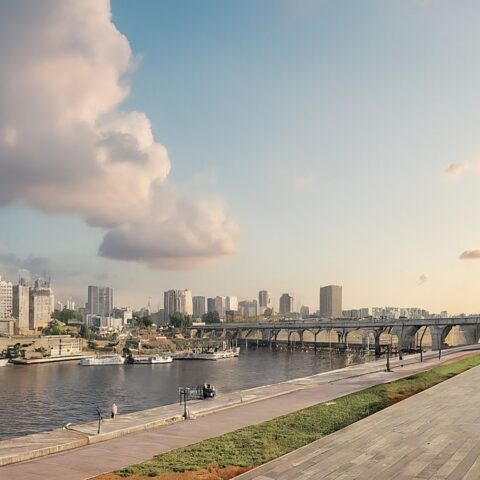Within a three-week period, Adrian Smith sketched out the original designs that would eventually become the tallest building in the world, the Burj Khalifa. In the early 2000s, he was approached by Emaar Properties, the real estate company that developed the skyscraper. “They wanted to ask us about our experience with supertalls,” Smith tells AD. At the time, he was working at Skidmore, Owings & Merrill (SOM) and had designed buildings such as Jin Mao Tower, a 1,380-foot tower in Shanghai; and Zifeng Tower (formerly known as Nanjing Greenland Financial Tower), a 1,480-foot tower in Jiangsu, China.
Smith and colleagues, including Bill Baker, a structural engineering partner at SOM, took the meeting and traveled from Chicago to New York for an informal yet informational conversation. “We talked a lot about designing tall buildings, because they are so different from even a 60-story building,” Smith says. Emaar representatives told the SOM team that they were looking to develop the tallest skyscraper in the world in Dubai, and asked for recommendations for selecting an architect. “I said that you ought to have about a two- or three-week ideas competition,” Smith remembers. “And they called back the following week, and said, ‘That’s what we’re gonna do.’”
Soon after, Emaar approached a handful of architectural firms, including Smith’s team at SOM, with the basic project details—they wanted something in the 1640- to 1968-foot range—and gave each team a few weeks to pull together their ideas. As Smith explains, the SOM team submitted “a rough form” of what eventually became the Burj Khalifa. “The initial drawings, which weren’t much, suited their needs,” he says. “They selected us and we then started in earnest about a month later.”
What is the design of the Burj Khalifa based on?
Structurally, the Burj Khalifa is designed with a Y-shaped tripartite floor geometry. The design was largely based on Samsung Tower Palace Three, a skyscraper in Seoul with a similar structure that Smith had previously worked on. Because of zoning restrictions, Tower Palace Three currently stands at 73 stories, though it was originally meant to be 93, with multiple setbacks as it grew taller. When the height was reduced, “I brought it down to a point where they still stepped but only in two-story or three-story increments,” Smith explains. “So it was almost like building a top to the building.”
Though the original vision for Tower Palace Three didn’t come to pass in Seoul, the Smith still had the idea for a supertall structure with varied stepping from the three points of the tripod. “I had a scheme where each leg of the three tripods would drop off at different points,” he says, “and the other two legs would go up and then one of those would drop off, until just one leg would continue on.” Similarly, Smith had also designed a version where the legs stepped at varying intervals around the building, so that from a distance the building would appear to spiral. During the three-week ideas competition, Smith had presented both of these concepts to Emaar, who were drawn to the fact that in either iteration, the building was not only buildable, but also had a dynamic quality.







